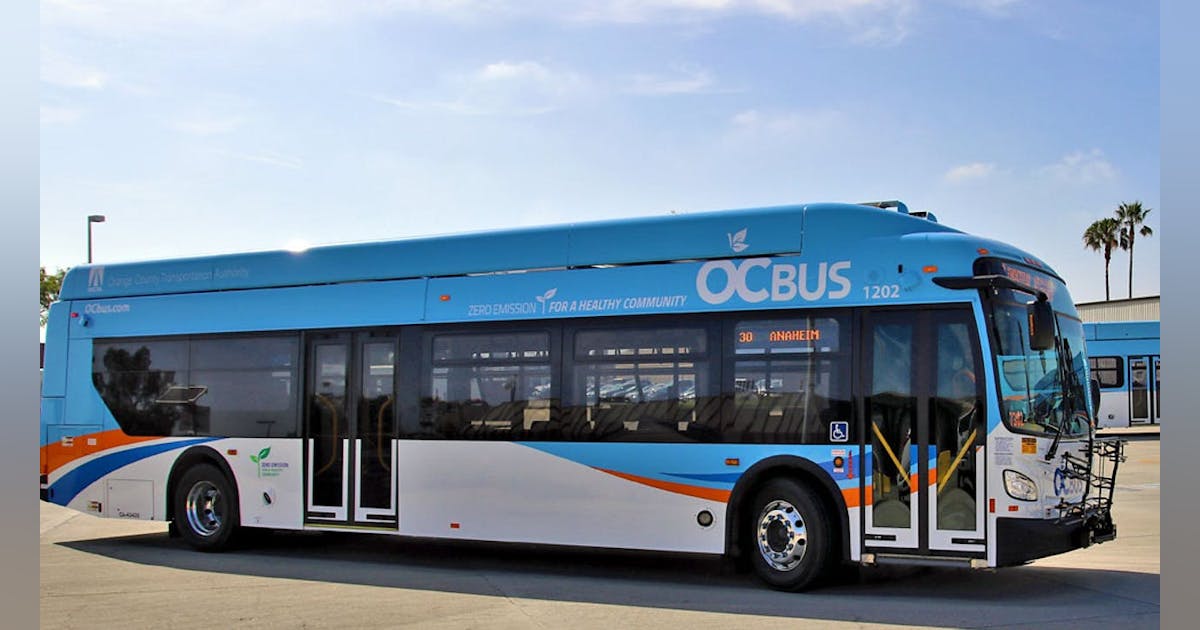OCTA completes 2024 Climate Adaptation and Sustainability Plan
OCTA completes 2024 Climate Adaptation and Sustainability Plan Mass Transit Magazine


OCTA Completes 2024 Climate Adaptation and Sustainability Plan

The Orange County Transportation Authority (OCTA) has completed its 2024 Climate Adaptation and Sustainability Plan (CASP). The plan sets a framework for addressing the impacts of climate change on Orange County’s transportation system and is aligned with the state of California’s sustainability goals.
OCTA’s CASP was developed with the vision to champion sustainability while adapting to an evolving environment, ensuring the delivery of reliable and balanced transportation choices. The plan details strategies to address climate change’s multifaceted challenges, including greenhouse gas emissions, climate-related hazards to facilities, and enhancing OCTA’s adaptive capacity to protect the community.
History of OCTA’s Environmental Leadership
- More than 20 years ago, OCTA adopted its first Long Range Transportation Plan (LRTP), which lays out an agency-wide strategy to address the growing transportation needs of Orange County’s population while ensuring that transportation options are sustainable, equitable, and innovative
- Two environmental programs were integrated into OCTA’s 2006 voter-approved Measure M sales tax: The Environmental Mitigation Program and the Environmental Cleanup Program. OCTA says the programs ensure sensitive habitat and wildlife in the region are protected in their native state and help improve overall water quality in Orange County.
- Since 2011, OCTA has monitored and reported greenhouse gas emissions, exemplifying its dedication to environmental leadership.
- In 2020, OCTA adopted its Zero-Emission Bus Rollout Plan, which commits the agency to transitioning to a 100-percent zero-emission bus fleet by 2040.
- In 2021, OCTA, in partnership with Caltrans, developed the Rail Defense Against Climate Change Plan, which identified climate-change-related opportunities and challenges along OCTA’s rail line between Fullerton and San Clemente, Calif.
- In 2021, OCTA issued its Natural Hazard Mitigation Plan to support current OCTA emergency and crisis management plans and strengthen the agency’s preparedness in the face of natural hazards, including climate change.
A Forward-Looking Assessment
Building upon OCTA’s existing efforts, the CASP identifies 34 unique assets, evaluating their vulnerability against seven climate hazards:
- Air quality
- Precipitation changes and drought
- Flooding
- Severe storms and extreme weather
- Storm surges
- Temperature changes
- Wildfires
Using impact and adaptive capacity scores, OCTA’s facilities, programs, and services have been assessed to prioritize adaptation strategies, ensuring that future disruptions to the public and passengers, increased operations and maintenance costs, and operational disruptions are minimized.
The plan presents adaptation strategies for OCTA’s consideration tailored to specific climate stressors. OCTA has also refined its greenhouse gas inventory methodology, setting a solid baseline for tracking progress. Innovative strategies outlined include transitioning to a cleaner fleet and implementing energy efficiency measures across facilities.
With exploratory targets and recommended strategies outlined, OCTA will now focus on goal setting, financial analysis, and feasibility studies to drive the strategies forward. OCTA will continue engaging with internal and external stakeholders to refine these pathways for a sustainable transit future.
SDGs, Targets, and Indicators in the Article
1. SDGs Addressed or Connected to the Issues Highlighted in the Article
- SDG 7: Affordable and Clean Energy
- SDG 9: Industry, Innovation, and Infrastructure
- SDG 11: Sustainable Cities and Communities
- SDG 13: Climate Action
- SDG 15: Life on Land
2. Specific Targets Under Those SDGs Based on the Article’s Content
- SDG 7.2: Increase substantially the share of renewable energy in the global energy mix.
- SDG 9.1: Develop quality, reliable, sustainable, and resilient infrastructure.
- SDG 11.2: Provide access to safe, affordable, accessible, and sustainable transport systems for all.
- SDG 13.1: Strengthen resilience and adaptive capacity to climate-related hazards.
- SDG 15.1: Ensure the conservation, restoration, and sustainable use of terrestrial and inland freshwater ecosystems.
3. Indicators Mentioned or Implied in the Article to Measure Progress Towards the Identified Targets
- Indicator for SDG 7.2: Proportion of total energy consumption from renewable sources.
- Indicator for SDG 9.1: Proportion of the rural population who live within two kilometers of an all-season road.
- Indicator for SDG 11.2: Passenger and freight volumes, by mode of transport.
- Indicator for SDG 13.1: Number of deaths, missing persons, and directly affected persons attributed to disasters per 100,000 population.
- Indicator for SDG 15.1: Proportion of important sites for terrestrial and freshwater biodiversity that are covered by protected areas.
Table: SDGs, Targets, and Indicators
| SDGs | Targets | Indicators |
|---|---|---|
| SDG 7: Affordable and Clean Energy | Increase substantially the share of renewable energy in the global energy mix. | Proportion of total energy consumption from renewable sources. |
| SDG 9: Industry, Innovation, and Infrastructure | Develop quality, reliable, sustainable, and resilient infrastructure. | Proportion of the rural population who live within two kilometers of an all-season road. |
| SDG 11: Sustainable Cities and Communities | Provide access to safe, affordable, accessible, and sustainable transport systems for all. | Passenger and freight volumes, by mode of transport. |
| SDG 13: Climate Action | Strengthen resilience and adaptive capacity to climate-related hazards. | Number of deaths, missing persons, and directly affected persons attributed to disasters per 100,000 population. |
| SDG 15: Life on Land | Ensure the conservation, restoration, and sustainable use of terrestrial and inland freshwater ecosystems. | Proportion of important sites for terrestrial and freshwater biodiversity that are covered by protected areas. |
Copyright: Dive into this article, curated with care by SDG Investors Inc. Our advanced AI technology searches through vast amounts of data to spotlight how we are all moving forward with the Sustainable Development Goals. While we own the rights to this content, we invite you to share it to help spread knowledge and spark action on the SDGs.
Fuente: masstransitmag.com

Join us, as fellow seekers of change, on a transformative journey at https://sdgtalks.ai/welcome, where you can become a member and actively contribute to shaping a brighter future.







